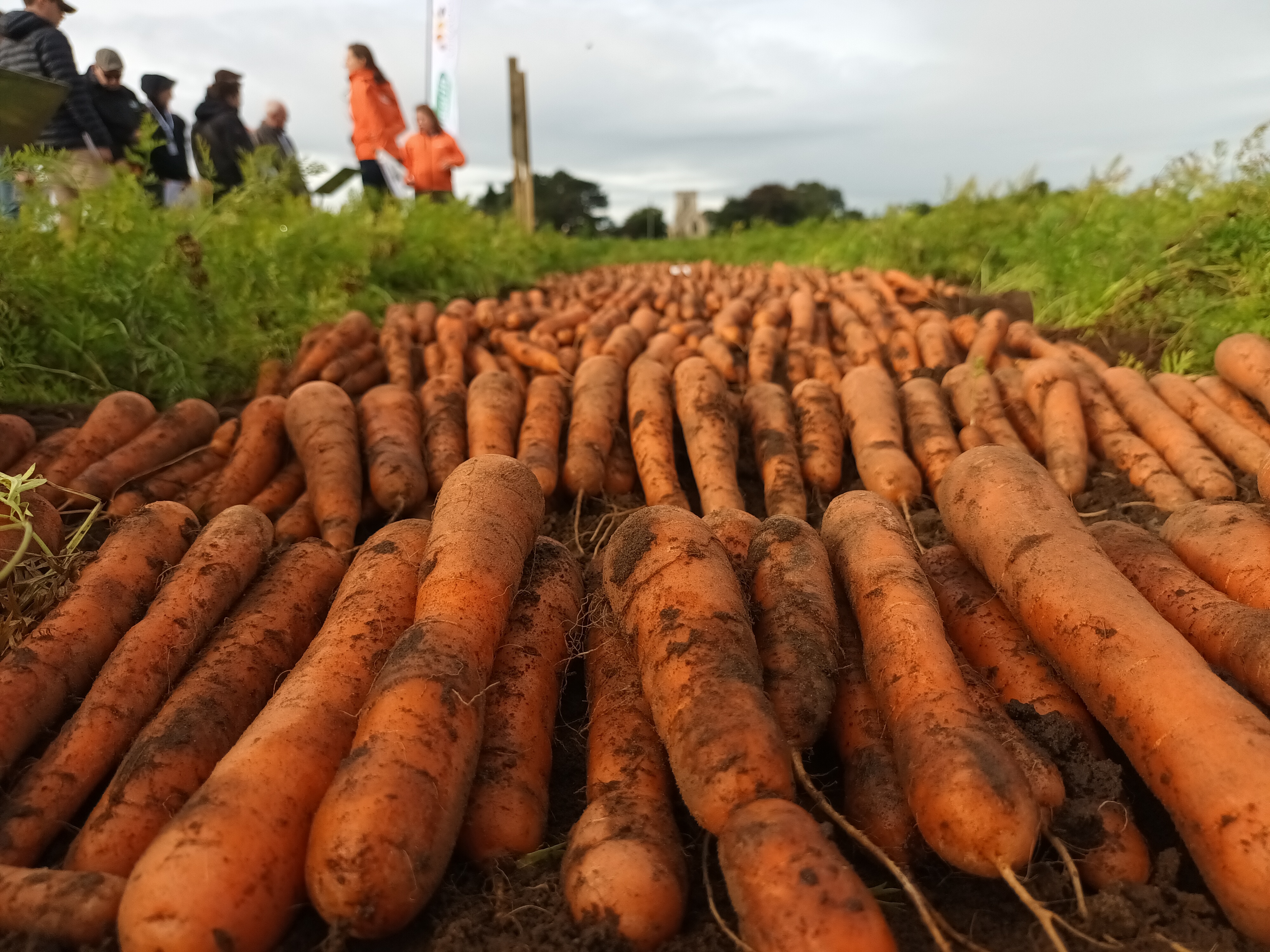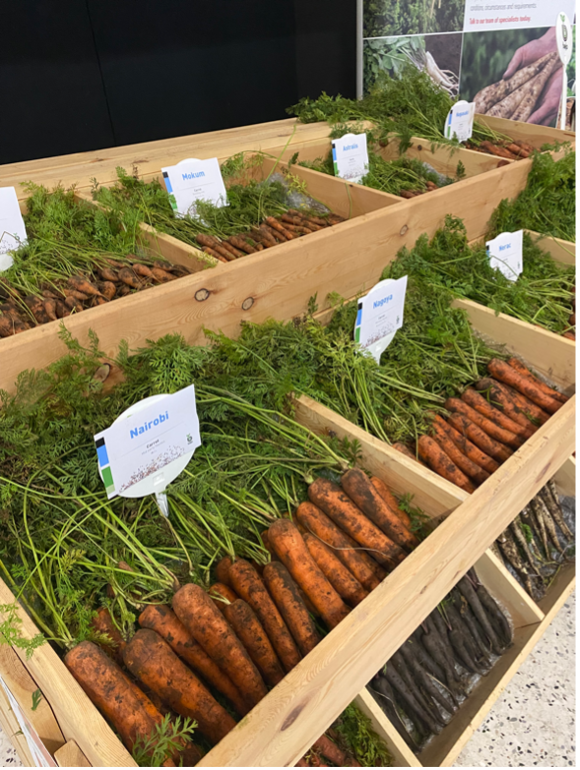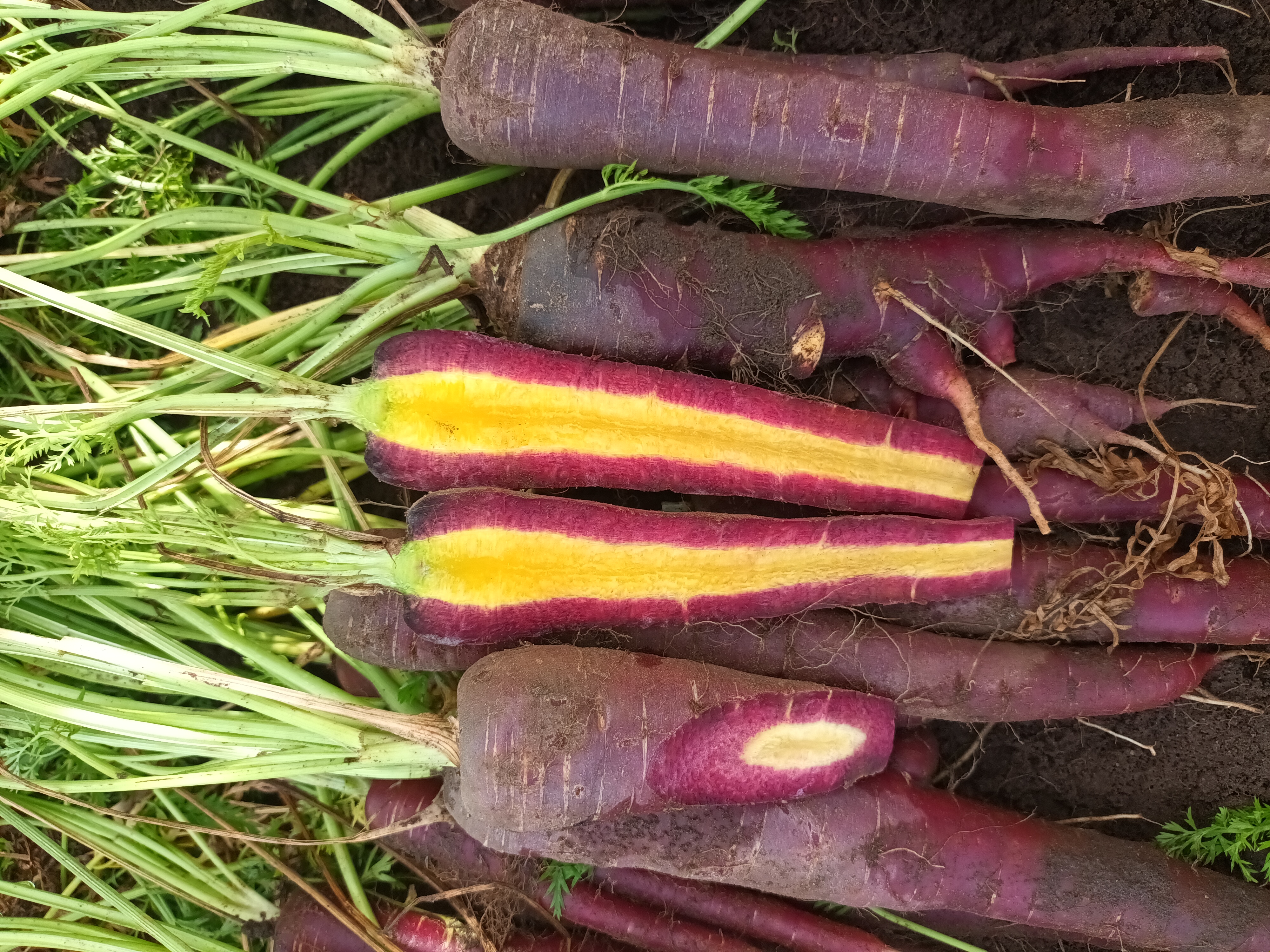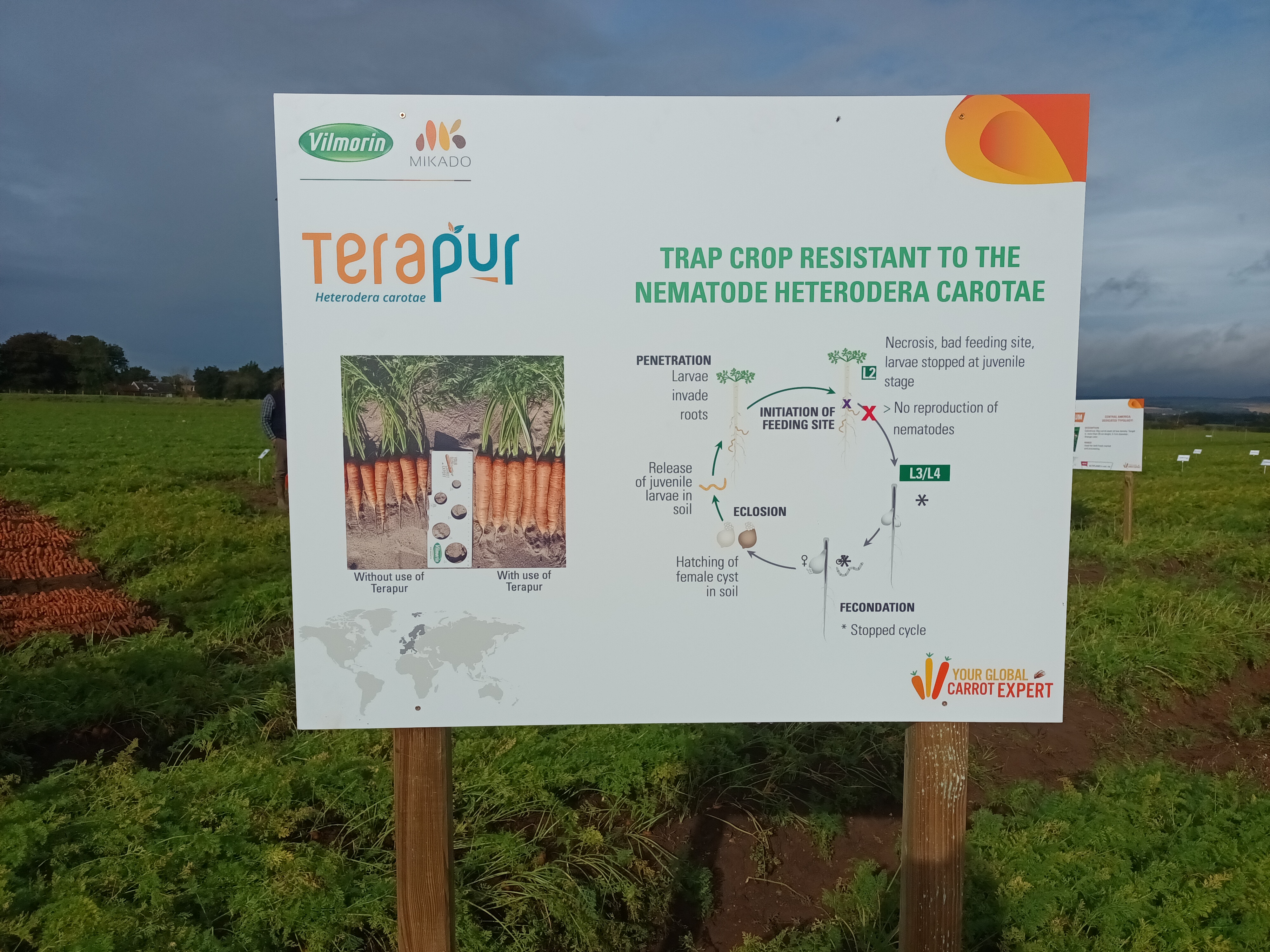International Carrot and other Apiaceae Symposium
York Racecourse welcomed ~200 delegates from across the globe for the III International Symposium on Carrot and other Apiaceae in early October 2023. This three-day event was organised and hosted by the British Growers Association and International Society for Horticultural Science, with key sponsors including the seed companies Bejo, Elsoms and Vilmorin-Mikado. With speakers from industry and academia, the symposium provided valuable insights into various aspects of the carrot sector, right from R&D, growing and processing through to marketing, retail and consumption.

The introductory talks were given by Martin van der Voort from Bejo and Steven Shields from one of the UK’s largest carrot-producing companies Huntapac, who focussed on challenges faced by the carrot industry and how they are working towards solutions. Extremes in weather, land and water availability, the labour market, loss of actives, net zero targets, food waste and the cost of production were all cited as issues currently of high importance. Huntapac are addressing key issues by participating in the Linking Environment and Farming (LEAF) initiative, which aims to provide training and mentoring for farmers to introduce more sustainable farming practices and work towards reducing greenhouse gas emissions. The company have a field site designated to investigating low carbon farming methods, for example trialling the use of low-C fertiliser. The retail side of the industry was discussed by Joel Sorrell-Roberts (Kantar Worldpanel), who also considered consumer trends in terms of food options. It was emphasised that there has been a shift towards choosing international cuisines, fast foods and vegan/meat-free meals rather than more traditional roasts and casseroles, and that the carrot industry perhaps needs to adapt and think more about how carrots can be incorporated into more popular food choices.

Due to the wide array of topics to be covered, the symposium was divided into technical and scientific sessions. In the scientific section on Day 1, talks were included for example on the effects of drought and soil compaction on carrot production (Dr Mette Goul Thomsen, Norway), control of foliar fungal diseases in carrots with natural plant extracts (Simone Chrapaciene, Lithuania) and evaluating biocontrol agents for control of foliar diseases (Dr Valerie Le Clerc, France) and for control of carrot root fly (Dr Richard Binks, Koppert). Of particular interest in terms of root protection and storage, was a presentation from Dr Jolyon Dodgson, Levity Crop Science, a research-led fertiliser company. They have identified a stimulant which aids the absorption of calcium in the plant, thereby improving carrot periderm integrity. The product has been shown to improve carrot yield and firmness in the field. Dr Kirsten Brandt (University of Newcastle) provided new insights on the role of carrots in relieving malnutrition and cancer, and described the mounting experimental evidence which suggests that regularly including carrots in the diet (rather than just a beta-carotene supplement) not only reduces vitamin A deficiency but also reduces the risk of cancer. However, she emphasised that more food-based research is needed to determine how well carrots and other Apiaceae actually produce anticancer effects in humans.

Research at Warwick University on carrots and related crops was discussed by a few speakers including Dr Lauren Chappell, who also gave an overview of the Vegetable Genetic Improvement Network (VeGIN) project. VeGIN seeks to facilitate interaction between researchers and industry to work towards delivering improved vegetable varieties using sustainable approaches. Carrot is one of four key vegetable crops covered in the project, and Lauren outlined the development of screening assays to assess varieties for resistance to Willow Carrot Aphid and Carrot Red Leaf Virus, which are both becoming increasingly problematic for the growers. Advancements in producing rapid molecular diagnostic techniques for these key viral pathogens were also discussed. Nicole Pereira discussed the progress towards developing artificial inoculation systems for cavity spot to identify management strategies. Professor Rosemary Collier explained details of the SmartProtect platform, which encompasses categorised information on tools and technologies that can be incorporated into integrated approaches for managing pests and diseases in vegetable crops. These include decision support techniques such as warning systems for pests and pathogens. ‘Smart’ traps which have undergone field testing for remotely monitoring pest populations were also described.
The broad content of the symposium was extremely informative and really gave a perspective of the ‘bigger picture’ in terms of carrot production and consumption.

Day two of the conference had a strong focus on carrot breeding and genetics. The scientific sessions started with a detailed update on the latest work on the carrot genome from Massimo Iorizzo, which included a fascinating explanation of the genetic factors involved in determining orange colour in carrots. Through the morning talks included the development of carrot mapping populations and a study on genetic diversity in the crop Arracacha. Talks later in the morning turned to phenotyping with a particular highlight being Cindy Torres from Vilmorin-Mikado on using AI to identify carrots in images. The morning concluded with a talk about the need to better understand genotype environment interactions, especially with the increasing challenge of climate change from Juliette Chevalier.
The afternoon scientific sessions continued the broad theme of breeding. Emmanuel Geoffriau described work with organic carrot farmers in France developing new varieties, while Mohammad Abdur Rahim discussed the screening of carrot wild relatives for useful traits. The day ended with presentation of awards for the best poster and presentation from early career researchers as well as the ISHS young mind award. On day three, the conference concluded with a trip to the British Carrot Growers Association Demonstration Day, in Sherburn, North Yorkshire. The day did not bode well, with heavy rain through the morning while delegates were on the drive out to Sherburn. On arrival at the field site everyone tipped out into the large marquee to escape the rain and were greeted with a bacon sandwich, as well as many trade displays of the latest carrot picking and packing machinery. Thankfully, late morning the rain stopped, and everyone headed out into the fields to view the carrot plots. Among the standard carrot varieties were an impressive array of yellow, red and purple varieties, as well as rooted parsley.

One very strange white scraggly looking root turned out to be a variety developed as trap crop for the nematode Heterodera carotae. This variety is designed to provide a bad feeding site for the nematode, which then stops its reproductive cycle at the larval stage.

The day finished with lunch back in the marquee. After two days of in depth technical and scientific discussions it was a great way to round off the conference relating all that work back to a carrot in the ground in a field.

Nicole Pereira & Sarah Trinder



